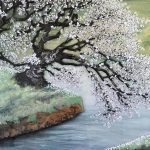A Behind-the-Scenes Look at Daniel Wall’s Artistic Process
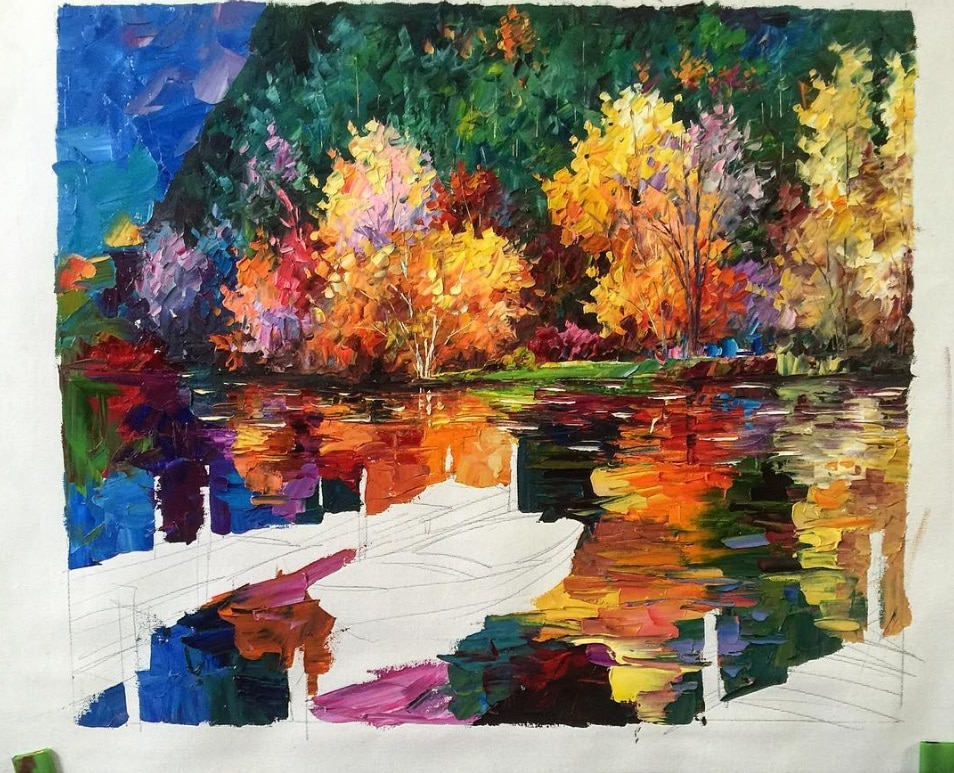
An in-progress work from Daniel Wall. (Courtesy of the artist.)
In magic, spectators become disenchanted in learning the secrets behind the illusions. When it comes to art, however, Daniel Wall believes the opposite is true.
By sharing photos of his works in progress on Instagram, Wall invites collectors to look behind the magic of creation and become a part of the experience.
“When they see the progress, they feel like they are watching me paint in person in my studio,” Wall says. “They experience the excitement of the creation process, and become closer to me and to the artwork.”
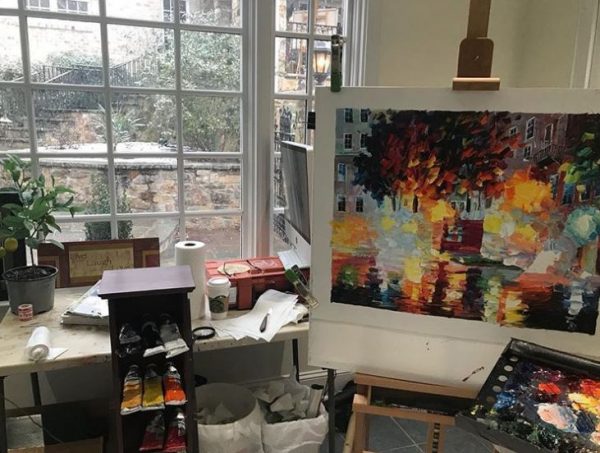
Daniel Wall’s studio (Photo courtesy of the artist)
Wall describes his style as “Intense Impressionism,” a contemporary version of the Impressionism movement established in France in the late 19th century. Characterized by thick impasto, bright colors, and an attention to light, Wall’s works are instantly recognizable, even in their early stages.
To give an even deeper insight into his process, Wall shared some photographs of his art-in-progress with Park West as well as information on his creative methods:
HOW DANIEL WALL BEGINS A PAINTING
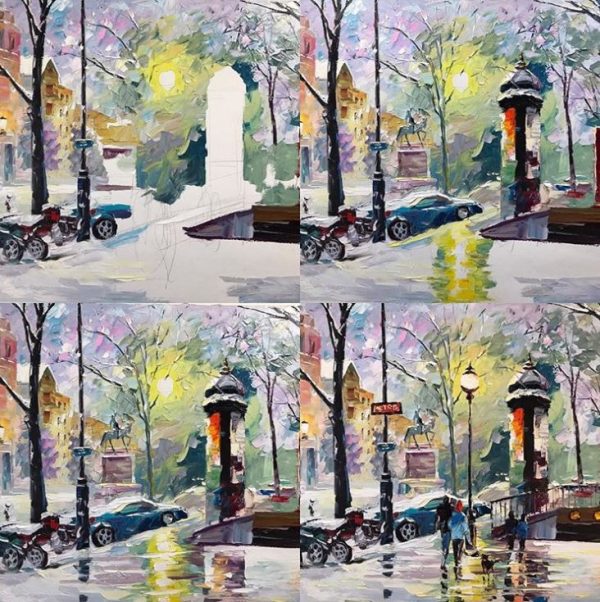
Daniel Wall artwork in multiple stages of completion (Photo courtesy of the artist)
As seen in these photos, Wall likes to create a rough sketch of his compositions before he starts to paint. Once the sketch is finished, he begins layering on swathes of paint to establish basic details and the background. From there he begins working on the more detailed aspects.
WALL’S TECHNIQUES
Wall’s medium of choice is oil paint. He says he prefers oils over other paints because they allow him to create art with bright and vivid colors.
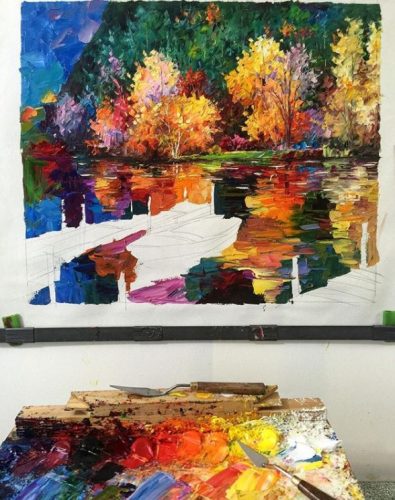
A work-in-progress by Daniel Wall (Photo courtesy of the artist)
Instead of a paintbrush, Wall paints exclusively with a palette knife. The tool is a flexible metal blade traditionally used for mixing paint or clearing an artist’s palette, but many artists use it to create dramatic, sweeping effects.
“You patch oil paint on the canvas to create a smooth surface, but it can also be used for making heavy textures,” Wall says.
Aside from creating textured, conspicuous strokes, using a palette knife allows Wall to mix his paint directly on the canvas to achieve his desired hues.
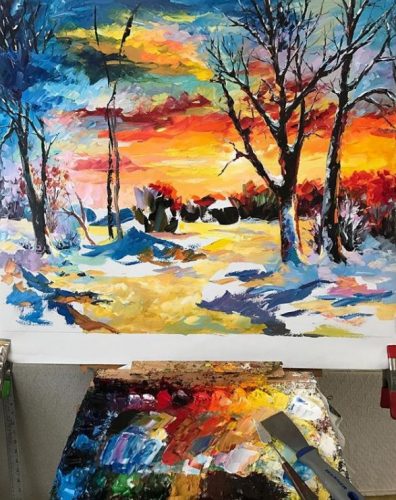
(Photo courtesy of Daniel Wall)
PAINTING DETAILS WITH PALETTE KNIVES
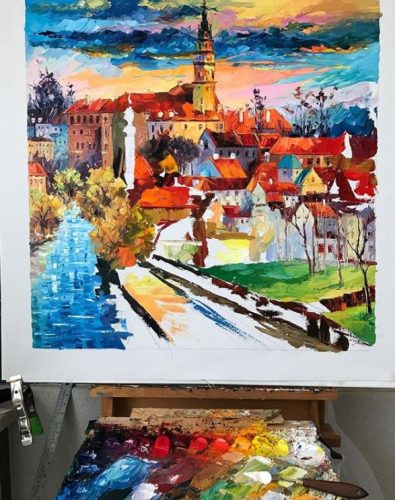
A Daniel Wall work nearly finished (Photo courtesy of the artist)
Palette knives come in all shapes and sizes, and are usually designed with a blunt end or a sharpened tip. Wall says when creating the finer details seen in his paintings, he uses the very edge of his palette knives. By using the knives at various angles, he is able to masterfully apply minute details one would normally expect from a fine brush.
“There is no single brushstroke,” Wall assures.
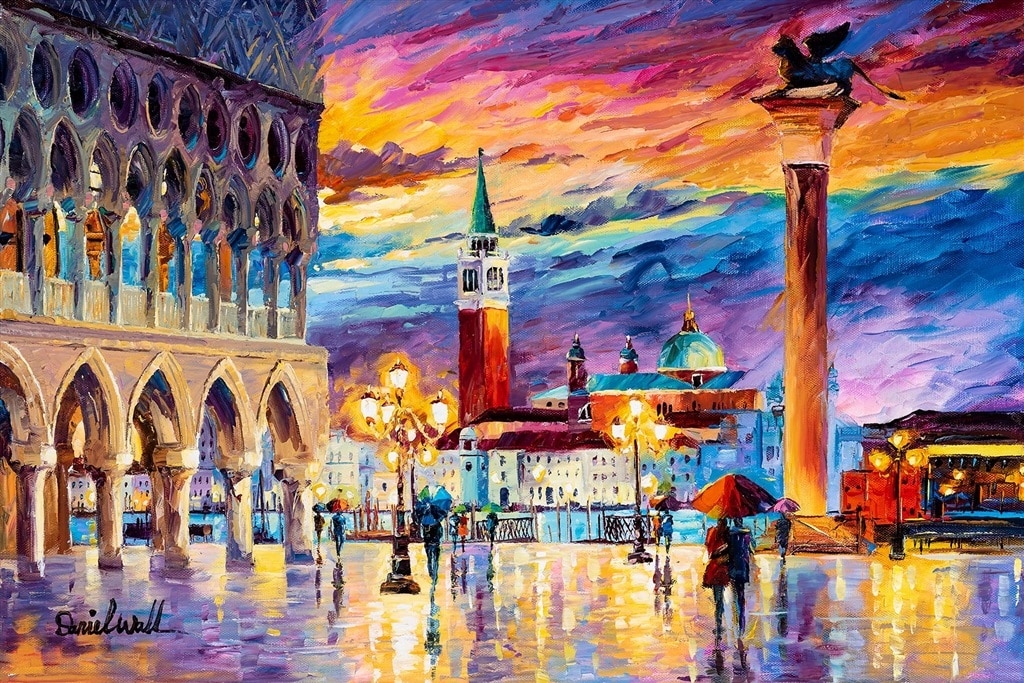
“Rainy Day in Venice” (2020), Daniel Wall
The end results are textured, luminous scenes full of color, romance, and optimism. No matter the subject, Wall says his ultimate desire is to make people happy with his art.
“God created the beautiful world for us and I want to capture the beauty around us and share it with everyone,” Wall says.

“Peaceful Day” (2019), Daniel Wall
For more information on or to collect the works of Daniel Wall, register for our exciting weekly online auction or contact our gallery consultants at (800) 521-9654 ext. 4 or sa***@*************ry.com.
Follow Park West Gallery and Daniel Wall on Instagram.




